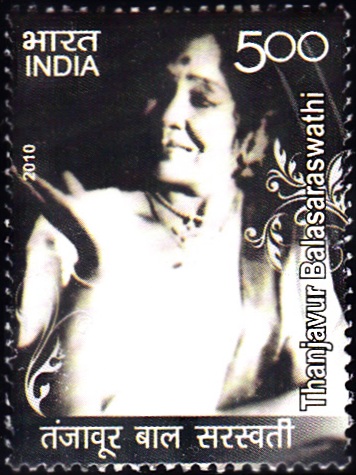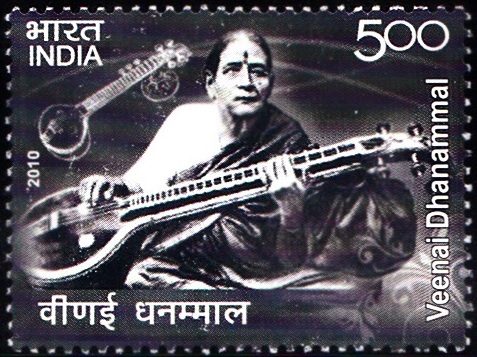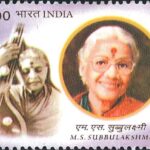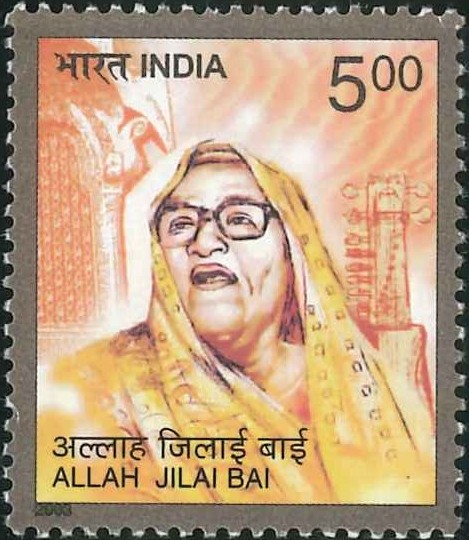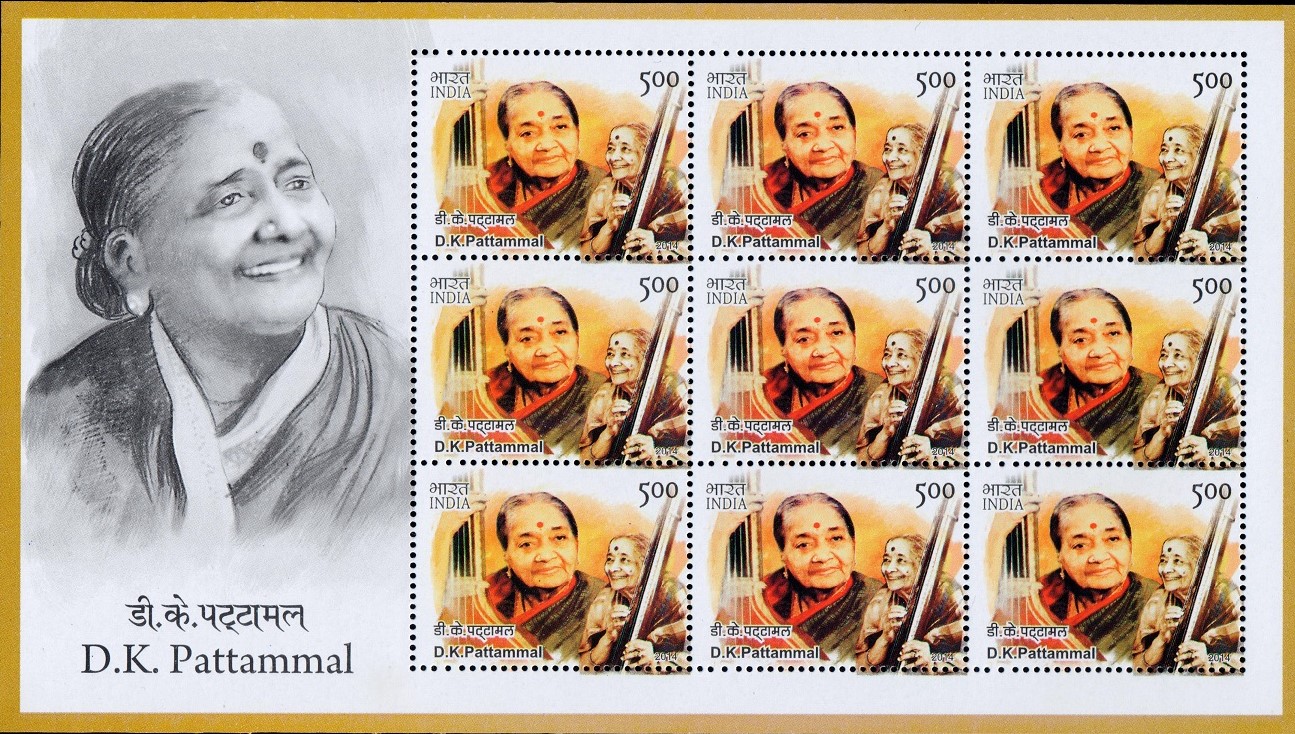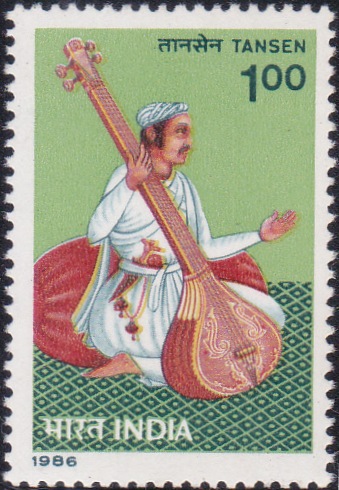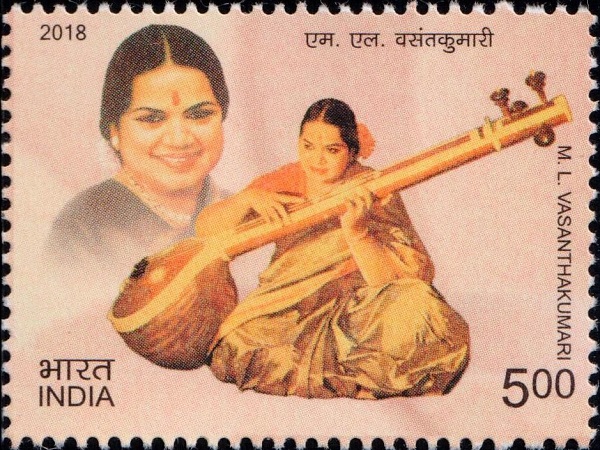
M. L. Vasanthakumari (MLV)
A commemorative postage stamp on the birth anniversary of MLV, one amongst “female trinity of Carnatic Music” along with D. K. Pattammal & M. S. Subbulakshmi :
 Issued by India
Issued by India
Issued on Jul 3, 2018
Issued for : Department of Posts is pleased to issue a Commemorative Postage Stamp on M. L. Vasanthakumari.
Credits :
Stamp/First Day Cover/Brochure : Shri Sankha Samantha
Cancellation Cachet : Smt. Alka Sharma
Type : Stamp, Mint Condition
Colour : Multi Colour
Denomination : 500 Paise
Stamps Printed : 501540
Printing Process : Wet Offset
Printer : Security Printing Press, Hyderabad
Name : Madras Lalitangi Vasanthakumari
Born on 3 Jul, 1928 at Madras, British India
Died on 31 Oct, 1990 at Chennai, Tamil Nadu, India
About :
- Born into a family of singers, this classical Indian Carnatic vocalist was eventually known as MLV, an acronym standing for melody, laya and vidwat, three essential components of Carnatic music, which translated refer to melody, rhythmic variation and depth of feeling. She was one of a select triad of female vocalists who pushed the boundaries in a male-dominated culture, not only earning the right to perform on concert stages instead of only at private parties, but also being allowed to develop and demonstrate the ability to perform extended serious pieces from a variety of classical disciplines. Her associate female composers were the vocalists D. K. Pattammal and M. S. Subbulakshmi, together the three are widely referred to as the female Trinity of Carnatic music.
- Vasanthakumari’s mother was the concert performer Lalithangi. As a child, the little MLV was a support singer and also picked up training later on from the vocalist G. N. Balasubramaniam. He was her first large influence and the early stages of her music are marked by the same kind of rapid-fire phrasing and tricky rhythmic patterns that he was known for. Later in her career, she made a stylistic change and became an innovator.
- Born in Chennai on 3 July 1928 to musician parents Koothanur Ayyasami Iyer and Lalithangi, Vasanthakumari was a child prodigy. Lalithangi had learnt music from Coimbatore Thayi, Flute Subba Rao and Veena Dhanammal. Iyer and Lalithangi played an important part in propagating the devarnamas of Purandaradasa and also showed keen interest in Hindustani music. Young Vasanthi naturally grew up in a wonderful musical atmosphere, listening to the songs of Purandaradasa, the Trinity and other composers and visiting Hindustani musicians.
- But for the insistence of her charismatic guru, G. N. Balasubramanian, Vasanthakumari might not have become a career musician, as her parents, disappointed by lack of recognition, wanted her to pursue a proper education rather than music. She completed Senior Cambridge at school and acquired proficiency in English, developing a keen intellect that was often reflected in her music. It was G. N. Balasubramanian, who had heard her singing to herself once when he happened to be rehearsing for a programme with Lalithangi and D. K. Pattammal, who convinced them to let her learn from him.
- Vasanthi started accompanying Lalithangi in her recitals from the age of 11. She gave her first solo recital in Bangalore unexpectedly in 1941, when she was barely 13, as Lalithangi had to withdraw because of an attack of asthma. Introduced that evening to the audience as Madras Lalithangi Vasanthakumari, she gradually became famous as MLV.
- Vasanthakumari earnestly followed her guru’s advice that she must imbibe the best attributes of his music but must not imitate her. Her raga alapana, for instance, was marked by the same step-by-step development patented by GNB. She was also outstanding in niraval, with brigas flowing effortlessly from her silvery voice. In swaraprastara, too she was creative and original, striking surprising swara combinations with utmost fluidity. She was quite at her best in the ragamalika swaras she tended to render as part of ragam-tanam-pallavi. The ragamalika could be of mainstream ragas like Kanada, Kedaram, Yadukulakambhoji and Sahana, or rare ones like the Hindustani Tilang, Revati, Sindhubhairavi, Kalavati and Chandrakauns.
- Vasanthakumari’s kutcheris usually included besides ragam-tanam-pallavi, a varnam, a kriti in a major raga like Sankarabharanam, Kalyani, Bhairavi, Kambhoji, Todi or Kharaharapriya, kritis in ragas like Amritavarshini, Mohanam, Arabhi, Andolika, Hindolam or Poorvikalyani and lighter compositions following the main item, and a tillana to be sure. Her exquisite rendering of Purandaradasa songs was a major draw in her concerts.
- MLV was an excellent and caring teacher who took a loving interest in the careers of her disciples. Her daughter Srividya was a talented dancer who became a highly respected actor in Tamil cinema. She made the move into film music and was in demand on soundtracks. She was awarded with many titles and honours from music organizations all over the world. Among these were a doctorate degree, the cherished Padma Bhushan from the Government of India, the title of Sangita Kalanidhi from the Madras Music Academy and many more.
- Text : Based on material received from the proponent.
Subscribe
Login
0 Comments


